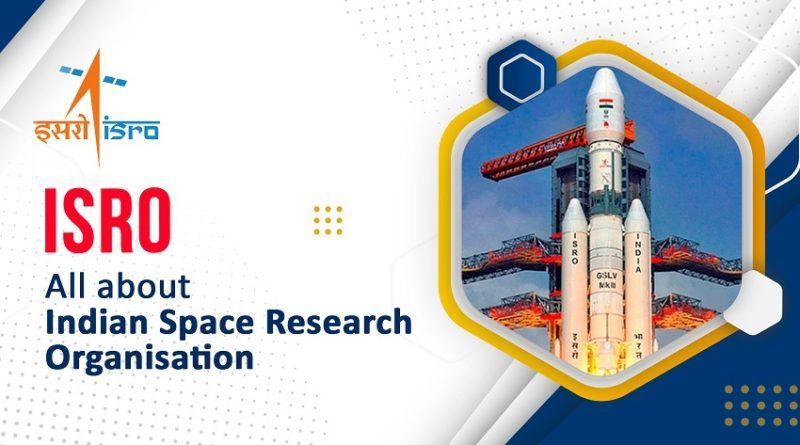India's Ambitious Lunar Quest: ISRO's Journey Towards Moon Landing
The Indian Space Research Organisation (ISRO) has earned international acclaim for its remarkable achievements in space exploration and satellite technology. One of its most ambitious endeavors has been the exploration of the Moon

Introduction
The Indian Space Research Organisation (ISRO) has earned international acclaim for its remarkable achievements in space exploration and satellite technology. One of its most ambitious endeavors has been the exploration of the Moon, a celestial body that has captured human imagination for centuries. With its cost-effective approach and innovative techniques, ISRO has made significant strides in lunar exploration, demonstrating India's capabilities in the realm of space science and technology.
India's Lunar Pursuit Unveiled
Embarking on India's lunar exploration initiative, Chandrayaan has emerged as a remarkable program.ISRO's voyage toward lunar landing commenced with the historic Chandrayaan-1 mission in October 2008. Marking India's inaugural lunar exploration, this mission embarked on gathering invaluable insights into the Moon's surface and constituents. With an array of 11 scientific instruments onboard, including a Moon Impact Probe that softly landed on the lunar terrain, crucial data was acquired.

A monumental revelation from Chandrayaan-1 was the presence of water molecules on the lunar surface, a discovery laden with implications for forthcoming lunar missions. The possibility of harnessing lunar water resources for supporting human settlements or space missions came into focus, reshaping the landscape of lunar exploration's prospects.
India's Second Lunar Expedition Unveiled
Chandrayaan-2 stands as the Indian Space Research Organisation's (ISRO) subsequent lunar exploration mission, succeeding Chandrayaan-1. This pioneering mission encompasses a lunar orbiter, a lander, and the ingenious Pragyan rover, all ingeniously crafted within India's borders. The primary scientific aim is to meticulously chart and investigate variations in lunar surface composition, alongside pinpointing the presence and distribution of lunar water resources. Launched from the Satish Dhawan Space Centre in Andhra Pradesh on 22 July 2019 at 09:13:12 UTC via the LVM3-M1 rocket, the spacecraft deftly entered the Moon's orbit by 20 August 2019, initiating precise orbital maneuvers for the impending Vikram lander's touchdown.

Originally slated for a landing in the Moon's southern polar region on the near side, at approximately 70° south latitude, on 6 September 2019, an unforeseen deviation during the landing attempt led to the unfortunate crash of the lander. A comprehensive analysis report submitted to ISRO attributed the mishap to a software anomaly, underlining the intricate nature of space exploration's challenges.
Chandrayaan-3 and Beyond
India's third lunar mission, Chandrayaan-3, is poised to mark a monumental achievement with its scheduled landing on the Moon's southern pole on August 23rd. This mission carries the potential to unveil future energy resources, particularly Helium-3, which holds significant promise as a potential energy source. With this triumph, India is poised to join an elite group of nations, including the United States, Russia, and China, as the fourth nation to accomplish this remarkable feat.
India's space program has been a longstanding exemplar of ambition and innovation on the global stage. With milestones such as the Chandrayaan-1 and Chandrayaan-2 missions to the Moon, the Mars Orbiter Mission, and the development of indigenous launch vehicles and satellites, India's prowess in space technology has been vividly demonstrated. Looking ahead, the nation aspires to send an Indian citizen into low earth orbit by 2023, further bolstering its national development and international influence. Predictions by experts foresee India's space program potentially contributing up to 10% of the global space economy within the next decade, a remarkable ascent from its current 2%.
In tandem with its achievements, India's space endeavors foster collaborative relationships with space agencies and organizations worldwide. Through these interactions, the nation aims to strengthen existing ties, embrace novel scientific and technological challenges, refine space policies, and help shape international frameworks for the peaceful utilization of outer space. As India's space program continues its upward trajectory, a radiant future unfolds, characterized by ceaseless innovation and exploration, extending beyond the limits of the stars.
FAQs
What is the ISRO successful Moon mission?
Chandrayaan-3 Mission: Vikram lander separates successfully, now landing on Moon on August 23. The Chandrayaan-3's lander 'Vikram' has successfully separated from spacecraft and is now expected to land on the moon on August 23.
Is India Moon Mission successful?
At present, the Lander module of Chandrayaan-3, comprising Vikram lander and Pragyan rover, after a successful deboosting, reduced their orbit to 113 km x 157 km. The second and final deboosting operation has also been successfully completed.
What are the benefits of moon missions?
Exploration of the Moon also creates new business opportunities for technological innovations and applications and utilization of new resources.
Why is Moon important to life?
The brightest and largest object in our night sky, the Moon makes Earth a more livable planet by moderating our home planet's wobble on its axis, leading to a relatively stable climate.
Continued Lunar Aspirations: ISRO's Vision and Beyond
ISRO's resolute commitment to lunar exploration remains steadfast, with future missions already underway. Chandrayaan-3, a dedicated mission focused on achieving a seamless soft landing, stands in the wings. Enriched by the lessons of Chandrayaan-2, ISRO is dedicated to surmounting the intricate challenges associated with lunar landings, aimed at gathering intricate data from the Moon's captivating surface.
Extending beyond individual missions, ISRO harbors a grand vision of establishing a lunar base, harnessing in-situ resources, and eventually embarking on crewed missions to the Moon. This visionary approach aligns harmoniously with international aspirations to establish a lasting human presence beyond Earth, paving the way for groundbreaking scientific exploration, revolutionary technological advancements, and collaborative ventures on a global scale.
Conclusion
ISRO's journey towards landing on the Moon is a testament to India's prowess in space technology and exploration. With each mission, ISRO has pushed the boundaries of innovation, uncovering mysteries of the Moon and advancing our understanding of the cosmos. Despite challenges, the organization's determination, cost-effective approach, and scientific ingenuity continue to inspire the world.
As ISRO continues to dream big and aim high, its endeavors in lunar exploration serve as a beacon of hope for humanity's quest to explore the cosmos. With each mission, India's space agency takes us one step closer to unraveling the secrets of the Moon and beyond, enriching our knowledge of the universe and shaping the future of space exploration.




